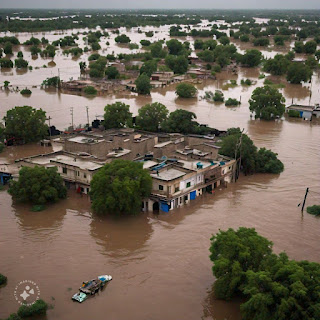The 2022 floods in Pakistan were one of the most catastrophic natural disasters in the country's history, leaving a trail of devastation and heartbreak in their wake. Heavy monsoon rains, coupled with climate change-induced glacial melting, resulted in unprecedented flash flooding that affected over 30 million people across the country.
The disaster began in June 2022, when torrential rains swept through the provinces of Balochistan, Sindh, and Khyber Pakhtunkhwa, causing rivers to overflow and dams to burst. The resulting deluge submerged entire villages, towns, and cities, destroying homes, infrastructure, and crops. The floods also ravaged the country's agricultural heartland, leaving millions of acres of fertile land underwater.
The human toll was staggering, with over 1,700 lives lost and millions more displaced. Survivors were forced to seek shelter in makeshift camps, where they struggled to access basic necessities like food, water, and healthcare. The economic impact was equally severe, with estimated losses exceeding $10 billion.
The 2022 floods served as a stark reminder of Pakistan's vulnerability to climate change. Rising temperatures and changing precipitation patterns have made the country increasingly prone to extreme weather events. The disaster also highlighted the need for improved disaster preparedness, infrastructure, and governance.
In the aftermath of the floods, the international community rallied to support Pakistan's relief efforts. However, the road to recovery will be long and challenging, requiring sustained commitment and cooperation from all stakeholders. As Pakistan rebuilds and recovers, it must also prioritize climate resilience and adaptation to mitigate the impact of future disasters.






